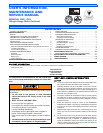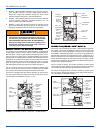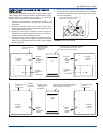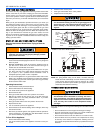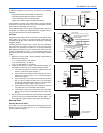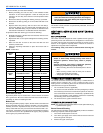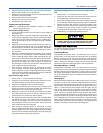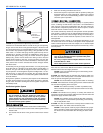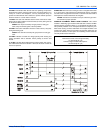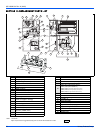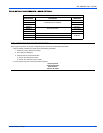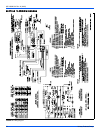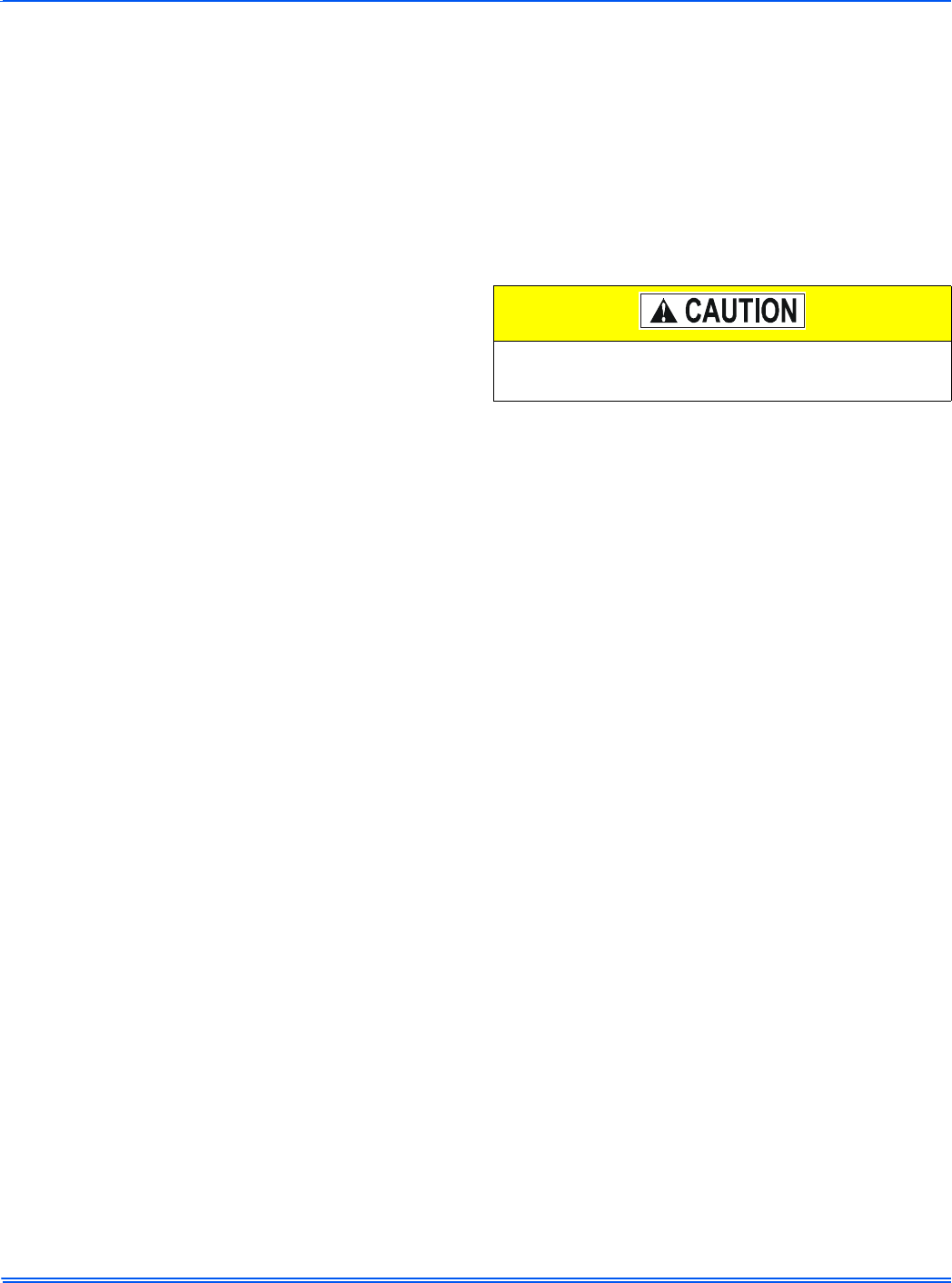
035-19992-001 Rev. A (0404)
Unitary Products Group 7
4. Disconnect wires from flame sensor, rollout switch and HSI ignitor.
Remove ignitor carefully, as it is easily broken.
5. Remove the screws that hold the burner box assembly to the vest
panel and remove the assembly.
6. Remove burners from the burner assembly.
7. Rinsing in hot water may clean burners.
8. Reassemble in the reverse order.
Cleaning the Heat Exchanger
NOTE: It is recommended that replacement gaskets be available
before removing vent motor.
Lower Heat Exchanger Access
1. Turn off the electrical power to the unit and turn off gas supply at
the shutoff valve.
2. Remove the blower and burner compartment access doors. Dis-
connect the gas supply piping at the union to permit removal of the
entire burner and gas control assembly from the vestibule panel.
Use the wrench boss on the gas valve when removing or installing
this piping.
3. Unplug the ignitor from the wire harness. Disconnect sensor and
rollout switch wires located on top of the air shield. Identify and
note the location of all leads for ease of reinstallation. Also discon-
nect the wires at the side rollout switches (upflow only) and the
gas valve wires.
4. Remove the screws holding the burner assembly to the vestibule
panel and remove this assembly. Handle the assembly carefully
since it contains the ignitor, which is fragile and easily broken. The
lower portion of the heat exchanger will now be exposed. With a
long flexible wire brush, clean inside of each heat exchanger at
both the top and bottom. The brush must pass around the rear
heat exchanger to remove any soot and scale. Vacuum loose soot,
scale and dirt from each heat exchanger.
5. After cleaning is complete, replace all components in reverse
order. Re-gasket all surfaces which required a gasket. Reconnect
all wiring. Reattach vent pipe and gas supply lines before restoring
service to furnace. Restore electrical power, check gas supply pip-
ing for leaks, and then verify furnace operation.
Upper Heat Exchanger Access
1. Perform steps 1 - 4 in cleaning the heat exchanger.
2. Unplug the vent motor wires and ground wire. Remove the pres-
sure switch tubing at the tap on the vent motor housing.
3. Disconnect vent piping from the vent motor assembly.
4. Remove the screws that secure the vent motor assembly to the
flue box and remove the vent motor assembly. The surface is also
gasketed so be extra careful not to tear the gasket.
5. Remove the screws from the flue box that secure the flue box to
the vestibule panel and remove the flue box. The surface is also
gasketed so be extra careful not to tear the gasket.
6. The upper portion of the heat exchanger is now accessible. With a
long flexible wire brush, clean inside of each heat exchanger at
both the top and bottom. The brush must pass around the rear
heat exchanger to remove any soot and scale. Vacuum loose soot,
scale and dirt from each heat exchanger.
7. After cleaning is complete, replace all components in reverse
order. Re-gasket all surfaces which required a gasket. Reconnect
all wiring. Reattach vent pipe and gas supply lines before restoring
service to furnace. Restore electrical power, check gas supply pip-
ing for leaks and then verify furnace operation.
Upper Heat Exchanger Access for furnaces converted to Down-
flow
1. Perform steps 1 - 4 in cleaning the heat exchanger.
2. Unplug the vent motor wires and ground wire. Remove the pres-
sure switch tubing at the tap on the vent motor housing.
3. Disconnect vent piping from the vent motor assembly and remove
the flue pipe that extends through the blower access compartment.
4. Remove the screws that secure the vent motor assembly to the
flue box and remove the vent motor assembly. The surface is also
gasketed so be extra careful not tear the gasket. The assembly
may be brushed and vacuumed to remove soot and scale.
5. Follow Steps 4-7 in “Upper heat exchanger access”.
SEQUENCE OF OPERATION
The following describes the sequence of operation of the furnace. Refer
to Figure 1 for component location.
Continuous Blower
Cooling/heating thermostats have a fan switch that has an ON and
AUTO position. In the ON position the thermostat circuit is completed
between terminals R and G. The motor will operate on the speed tap
wire that is connected to the cooling terminal on the control board. To
obtain a constant air circulation at lower flow rate, change the high-
speed wire to either the medium speed wire or the low speed wire.
Intermittent Blower - Cooling
Cooling/heating thermostats have a fan switch that has an ON and
AUTO position. In the AUTO position the thermostat circuit is completed
between terminals R and G when there is a call for cooling. The motor
will operate on the speed tap wire that is connected to the cooling termi-
nal on the control board. The fan off setting is fixed at 60 seconds for
SEER enhancement.
Heating Cycle
When the thermostat switch is set on HEAT and the fan is set on AUTO,
and there is a call for heat, a circuit is completed between terminals R
and W of the thermostat. When the proper amount of combustion air is
being provided, the pressure switch will close, the ignition control pro-
vides a 17-second warm-up period, the gas valve then opens, the gas
starts to flow, ignition occurs and the flame sensor begins its sensing
function. The blower motor will energize 30 seconds after the gas valve
opens, if a flame is detected. Normal furnace operation will continue
until the thermostat circuit between R and W is opened, which causes
the ignition system and gas valve to de-energize and the burner flames
to be extinguished. The vent motor will operate for 15 seconds and the
blower motor will operate for the amount of time set by the fan-off delay
jumper located on the control board. See Figure 7. The heating cycle is
complete, and ready for the start of the next heating cycle.
Label all wires prior to disconnection when servicing
controls. Wiring errors can cause improper and danger-
ous operation. Verify proper operation after servicing.



